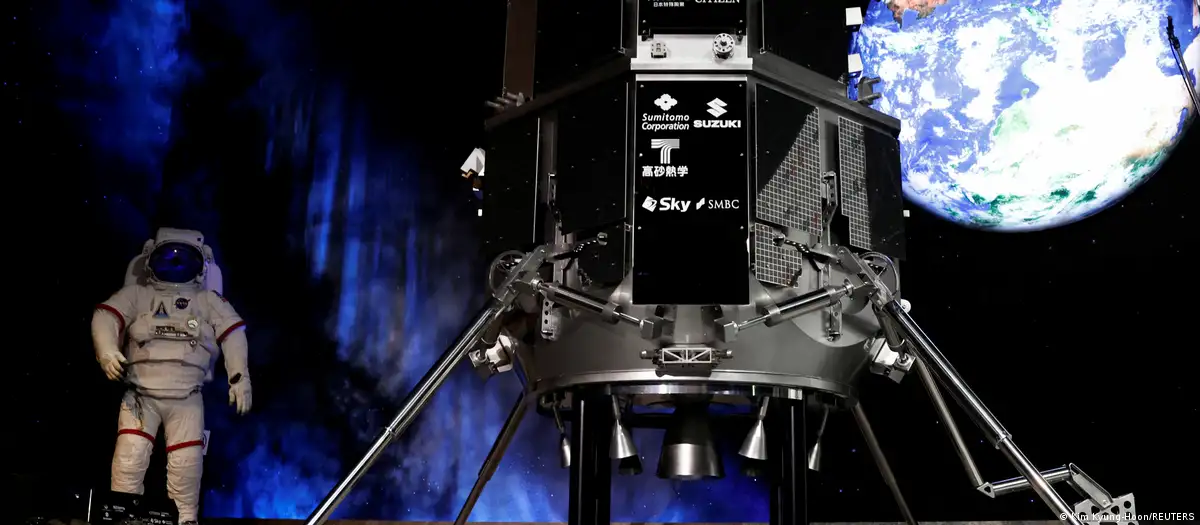NATURE AND ENVIRONMENTJAPAN
Japan postpones lunar mission again due to weather
56 minutes ago56 minutes ago
This time it was the wind that scuppered launch attempts after two previous postponements. No new launch date has been set. It was halted less than 30 minutes before it was scheduled to take place.
https://p.dw.com/p/4VdGK
A model of the lander in HAKUTO-R lunar exploration program by “ispace” is pictured at a venue to monitor its landing on the Moon, in Tokyo, Japan, April 26, 2023.
Japan has postponed its latest attempt to launch a lunar missionImage: Kim Kyung-Hoon/REUTERS
Japan’s space agency on Monday postponed the launch of its “Moon Sniper” lunar mission due to poor weather, making it the third postponement for the mission.
The H2-A rocket was also carrying a research satellite developed with NASA and the European Space Agency.
It was meant to launch from Japan Aerospace Exploration Agency (JAXA)’s Tanegashima Space Center in southern Japan at 9:26 a.m. local time (0026 GMT) on Monday.
The launch was postponed less than 30 minutes before it was scheduled to take place. Operator Mitsubishi Heavy Industries (MHI) said the mission was called off “because it was confirmed that the upper wind does not satisfy the constraints at launch”.
Japan has yet to set a new date for the next attempt.
Latest lunar mission attempt
Japan had attempted last year to launch a lunar mission named Omotenashi, which was carried on NASA’s Artemis 1. The mission was nevertheless unsuccessful after communications were lost.
In April this year, Japanese start-up ispace also took a chance to become the first private company to land on the moon, yet it also failed.
JAXA aims to land the “Moon Sniper” within 100 meters (330 feet) of a specific target on the moon. This is far less than the normal range of several kilometers.
Last week, India’s low-cost space program succeeded in landing a mission near the moon’s south pole. Only the United States, Russia and China had previously managed to place a spacecraft on the lunar surface. None had managed to do that on the moon’s south pole.
rmt/ (AFP, Reuters)






























